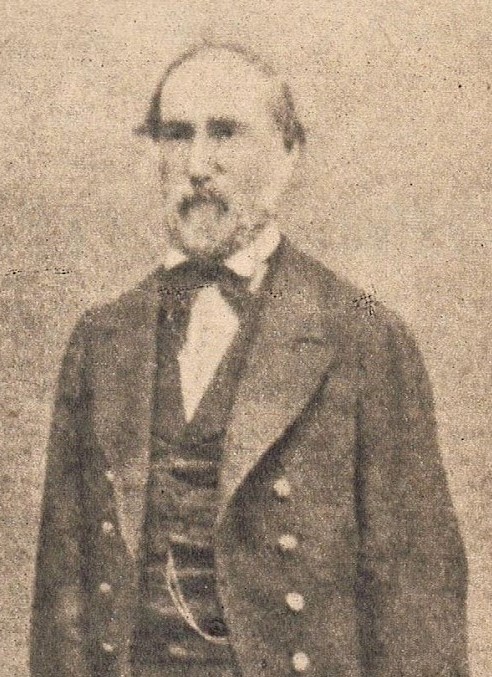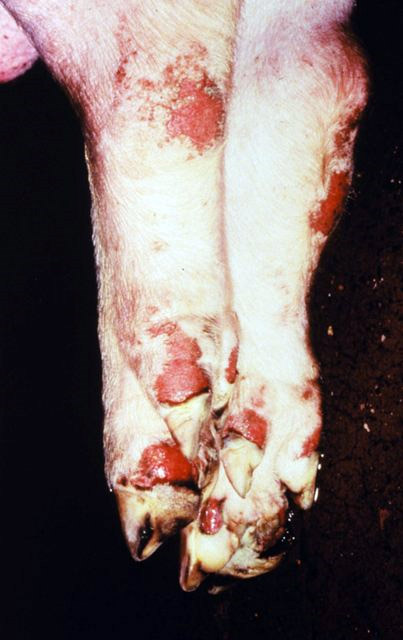|
Jorge Batlle Ibáñez
Jorge Luis Batlle Ibáñez (; ''Batlle'' locally or ; 25 October 1927 – 24 October 2016) was a Uruguayan politician and lawyer, who served as the 38th president of Uruguay from 2000 to 2005. A member of the Colorado Party, he previously served as National Representative from 1959 to 1967, and as Senator of the Republic from 1985 to 1990 and from 1990 to 1999. The eldest son of the 30th president Luis Batlle Berres and a member of the Batlle family, he was the fourth member of the family to serve as president of the country. He graduated from the University of the Republic in 1959 with a law degree, and then began a career as a journalist in ''El Día'' newspaper. He began his political career in the 1950s, being elected National Representative in the 1958 general election. During the civil-military dictatorship he was banned and in the 1984 general election that led to the democratic transition he was prevented from running for president, he could only run for the ... [...More Info...] [...Related Items...] OR: [Wikipedia] [Google] [Baidu] |
Luis Antonio Hierro López
Luis Antonio Hierro López (born June 6, 1947) is a Uruguayan politician and diplomat who served as the 13th vice president of Uruguay from 2000 to 2005 under Jorge Batlle. Born into a political family, his father was Luis Hierro Gambardella, former Minister of Education and Culture and Parliamentarian, while his grandfather, Luis Hierro Rivera, was National Representative. Member of the Colorado Party, Hierro López served as National Representative, Senator and as Ministry of the Interior. He also served as President of the Chamber of Representatives the fifth session of the 42nd Legislature. In November 2020, he was approved by the Senate as Ambassador of Uruguay to the Republic of Peru, and on March 22, 2021 he delivered the credentials to President Francisco Sagasti. Vice President of Uruguay Hierro López was Vice President of Uruguay from 2000 to 2005, under the Presidency of Jorge Batlle. Hierro was the thirteenth person to hold the office, which dates from 1934, whe ... [...More Info...] [...Related Items...] OR: [Wikipedia] [Google] [Baidu] |
1958 Uruguayan General Election
General elections were held in Uruguay on 30 November 1958, alongside a constitutional referendum.Dieter Nohlen (2005) ''Elections in the Americas: A data handbook, Volume II'', p494 Following the end of a schism between the National Party and the Independent National Party, the National Party received almost half the vote, winning a majority of seats in the National Council of Government, the Chamber of Deputies and the Senate, and allowing it to lead the government for the first time since 1865. As per the electoral rule, all nominees (Martín Echegoyen, Benito Nardone, Eduardo Víctor Haedo, Faustino Harrison, Justo M. Alonso and Pedro Zalbalza) of the Herrerism group of the National Party National Party or Nationalist Party may refer to: Active parties * National Party of Australia, commonly known as ''The Nationals'' * Bangladesh: ** Bangladesh Nationalist Party ** Jatiya Party (Ershad) a.k.a. ''National Party (Ershad)'' * Californ ..., as the most-voted group of the mos ... [...More Info...] [...Related Items...] OR: [Wikipedia] [Google] [Baidu] |
National Council Of Government (Uruguay)
The National Council of Government () was the ruling body in Uruguay between 1952 and 1967. It consisted of nine members, of which six were from the party that received the most votes in general elections, and three from the runner-up party. Generally known as the ''colegiado'' system,The Constitution Library of Congress Country Studies it had previously existed as the National Council of Administration () between 1918 and 1933. Nohlen, D (2005) ''Elections in the Americas: A da ... [...More Info...] [...Related Items...] OR: [Wikipedia] [Google] [Baidu] |
German School Of Montevideo
Colegio y Liceo Alemán de Montevideo (formal Spanish name). () is one of the most prestigious schools in Uruguay. It was established in 1857 for the children of German traders, artists, engineers and diplomats living in Montevideo. Since the second half of the 20th century, this school is located in the neighborhood of Pocitos. And since the end of the century, it has another location at Barra de Carrasco, on Av. Giannattasio (east of Carrasco). The school is also well known for having the best handball team in the country, having won most of the national tournaments. Organization and administration The school is directed by Christofer Lahser, acting as general headmaster. The specific secondary school and primary school directors are Juan Carlos Noya and Stephanie Achatz, respectively. Bicultural Baccalaureate One of the most notable characteristics of the school, is the availability of a German Abitur-based high school diploma program, with most lessons taught in German. I ... [...More Info...] [...Related Items...] OR: [Wikipedia] [Google] [Baidu] |
Elbio Fernández School
The is a Mixed-sex education, co-educational private school in Montevideo, Uruguay. Founded in 1869 as the first secular and private school in Uruguay and the main inspirer of the Varelian Reform, it provides day education to boys and girls aged 2–18. It serves preschool, primary school, and secondary school, the senior high school programs, including the ''Bachillerato Diversificado'' and bilingual education by the International Baccalaureate. Since 2013, it also serves the degree in primary education teaching and a Licentiate in Education recognized by the Ministry of Education and Culture (Uruguay), Ministry of Education and Culture at the Elbio Fernández University Institute (IUEF). Elbio Fernández School has educated a wide range of notable alumni, including intellectuals, athletes, media people, businessmen, and politicians such as 3 presidents of Uruguay and a vice president. History The Escuela y Liceo Elbio Fernández was founded on September 3, 1869, by the Socie ... [...More Info...] [...Related Items...] OR: [Wikipedia] [Google] [Baidu] |
Italian Uruguayans
Italian Uruguayans (; or ''tanos'' in Rioplatense Spanish) are Uruguayan-born citizens who are fully or partially of Italian descent, whose ancestors were Italians who emigrated to Uruguay during the Italian diaspora, or Italian-born people in Uruguay. Outside of Italy, Uruguay has one of the highest percentages of people of Italian descent in the world. It is estimated that approximately 44% of the total population of Uruguay—around 1,500,000 people—are of Italian ancestry. Furthermore, as of recent estimates, there are around 90,000 Italian citizens residing in Uruguay. Italian emigrants began to arrive in Uruguay in large numbers in the 1840s and this migratory flow continued until the 1960s. The population of Italian origin, alongside that of the Spaniards, is often regarded as the foundational pillar of modern Uruguayan society, significantly contributing to the country's economic, social, and cultural development. Italian immigrants played a pivotal role in the growth ... [...More Info...] [...Related Items...] OR: [Wikipedia] [Google] [Baidu] |
José Batlle Y Ordóñez
José Pablo Torcuato Batlle y Ordóñez ( or ; 23 May 1856 – 20 October 1929), nicknamed ''Don Pepe'', was a prominent Uruguayan politician who served two terms as President of Uruguay for the Colorado Party. The son of a former president, he introduced his political system, Batllism, to South America and modernized Uruguay through his creation of extensive welfare state reforms. In 1898, Batile served as interim president for a few weeks. He was later elected to the presidency for two terms: from 1903 to 1907 and from 1911 to 1915. He remains one of the most popular Uruguayan presidents, mainly due to his role as a social reformer. Influenced by Krausist liberalism, he is known for influencing the introduction of universal suffrage and the eight-hour workday, as well as free high school education. He was one of the main promoters of Uruguayan secularization, which led to the separation of the state and the Catholic Church. Education started a process of great expansion f ... [...More Info...] [...Related Items...] OR: [Wikipedia] [Google] [Baidu] |
Spain
Spain, or the Kingdom of Spain, is a country in Southern Europe, Southern and Western Europe with territories in North Africa. Featuring the Punta de Tarifa, southernmost point of continental Europe, it is the largest country in Southern Europe and the fourth-most populous European Union member state. Spanning across the majority of the Iberian Peninsula, its territory also includes the Canary Islands, in the Eastern Atlantic Ocean, the Balearic Islands, in the Western Mediterranean Sea, and the Autonomous communities of Spain#Autonomous cities, autonomous cities of Ceuta and Melilla, in mainland Africa. Peninsular Spain is bordered to the north by France, Andorra, and the Bay of Biscay; to the east and south by the Mediterranean Sea and Gibraltar; and to the west by Portugal and the Atlantic Ocean. Spain's capital and List of largest cities in Spain, largest city is Madrid, and other major List of metropolitan areas in Spain, urban areas include Barcelona, Valencia, Seville, ... [...More Info...] [...Related Items...] OR: [Wikipedia] [Google] [Baidu] |
Catalonia
Catalonia is an autonomous community of Spain, designated as a ''nationalities and regions of Spain, nationality'' by its Statute of Autonomy of Catalonia of 2006, Statute of Autonomy. Most of its territory (except the Val d'Aran) is situated on the northeast of the Iberian Peninsula, to the south of the Pyrenees mountain range. Catalonia is administratively divided into four Provinces of Spain, provinces or eight Vegueries of Catalonia, ''vegueries'' (regions), which are in turn divided into 43 Comarques of Catalonia, ''comarques''. The capital and largest city, Barcelona, is the second-most populous Municipalities in Spain, municipality in Spain and the fifth-most populous List of metropolitan areas in Europe, urban area in the European Union. > > > ''Catalonia'' theoretically derived. During the Middle Ages, Byzantine Empire, Byzantine chroniclers claimed that ''Catalania'' derives from the local medley of Goths with Alans, initially constituting a ''Goth-Alania''. Othe ... [...More Info...] [...Related Items...] OR: [Wikipedia] [Google] [Baidu] |
Sitges
; , ) is a town about 35 kilometres southwest of Barcelona, in Catalonia, Spain, renowned worldwide for Sitges Film Festival, its film festival, Carnival, and LGBTQ culture. Located between the Garraf Massif and the Mediterranean Sea, it is known for its beaches, nightspots, and historical sites. While the roots of Sitges' artistic reputation date back to the late 19th century, when painter Santiago Rusiñol took up residence there during the summer, the town became a centre for the 1960s counterculture in mainland Spain during the Francoist State, Francoist regime, and became known as "Ibiza in miniature". Today, the economy of Sitges is based on tourism and culture, offering more than 4,500 hotel beds, half of them in four-star hotels. Sitges is a gay-friendly destination with many establishments catering for the LGBT community and popular gay beaches. Almost 35% of the approximately 26,000 permanent inhabitants are from the Netherlands, the UK, France, and Scandinavia, whos ... [...More Info...] [...Related Items...] OR: [Wikipedia] [Google] [Baidu] |
Foot-and-mouth Disease
Foot-and-mouth disease (FMD) or hoof-and-mouth disease (HMD) is an infectious disease, infectious and sometimes fatal virus (biology), viral disease that primarily affects even-toed ungulates, including domestic and wild Bovidae, bovids. The virus causes a high fever lasting two to six days, followed by vesicle (dermatology), blisters inside the mouth and near the hoof that may rupture and cause lameness. FMD has very severe implications for animal farming, since it is highly infectious and can be spread by infected animals comparatively easily through contact with contaminated farming equipment, vehicles, clothing, and feed, and by domestic and wild predators. Its containment demands considerable efforts in vaccine, vaccination, strict monitoring, trade restrictions, quarantines, and the culling of both infected and healthy (uninfected) animals. Susceptible animals include cattle, domestic water buffalo, water buffalo, domestic sheep, sheep, goats, pigs, antelope, deer, and b ... [...More Info...] [...Related Items...] OR: [Wikipedia] [Google] [Baidu] |
2002 Uruguay Banking Crisis
The 2002 Uruguay banking crisis was a major banking crisis that hit Uruguay in July 2002. In this, a massive run on banks by depositors (most of them from neighboring Argentina) caused the government to freeze banking operations. The crisis was caused by a considerable contraction in Uruguay's economy and by over-dependence on Argentina (tourism, and construction boom), which experienced a strong phase of an economic meltdown itself in late 2001. In total, approximately 1/3 of the country's deposits were withdrawn and five financial institutions were left insolvent. The value of the Uruguayan peso fell, losing nearly half of its value against the U.S. dollar in 2002. Had there been proper bank regulation by Uruguayan authorities, the banking crisis could have been avoided entirely. The Central Bank of Uruguay (BCU) had trusted international banks to regulate themselves properly and was too lenient and slow in responding to the crisis. Banco Comercial del Uruguay In 1990, Chemica ... [...More Info...] [...Related Items...] OR: [Wikipedia] [Google] [Baidu] |




